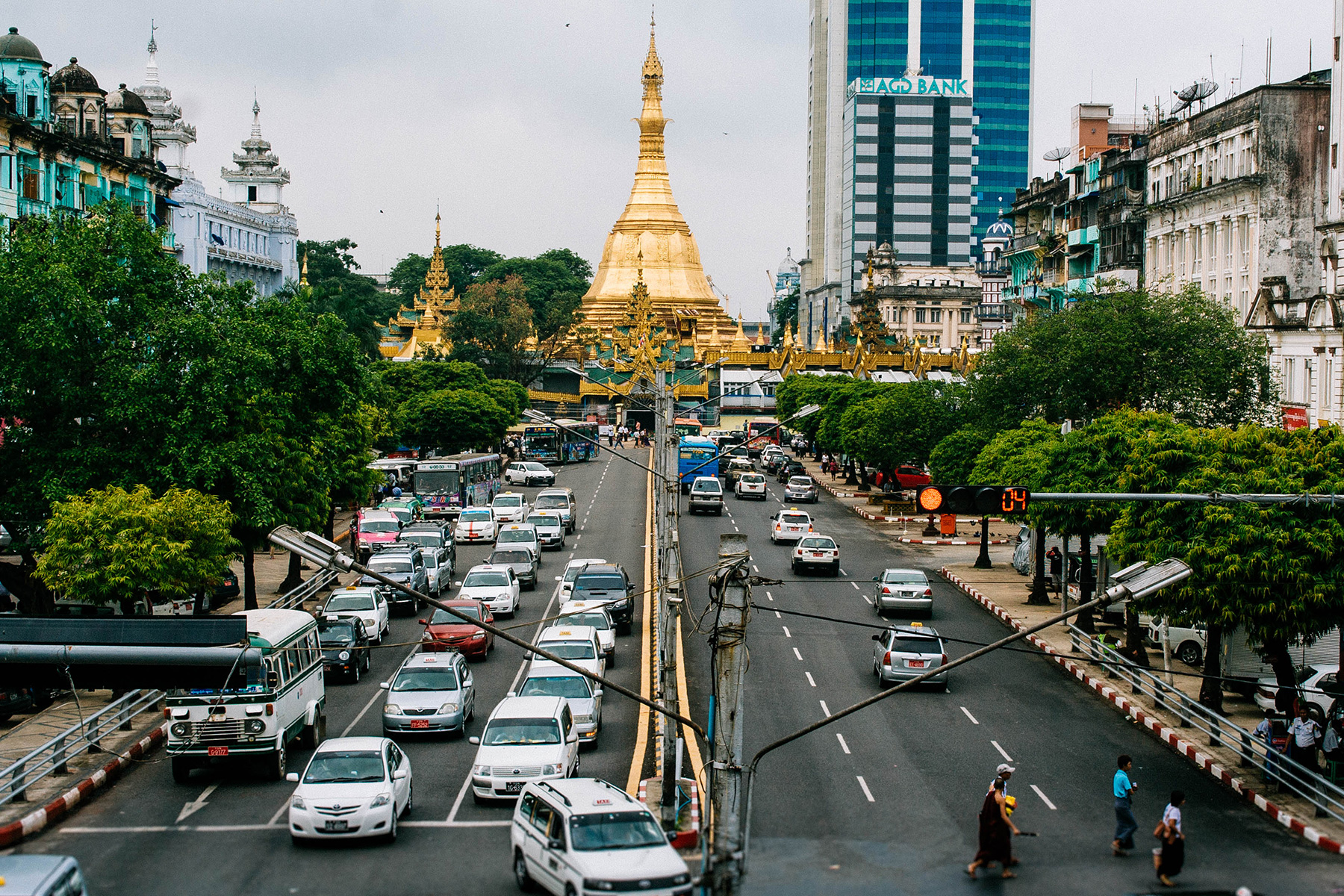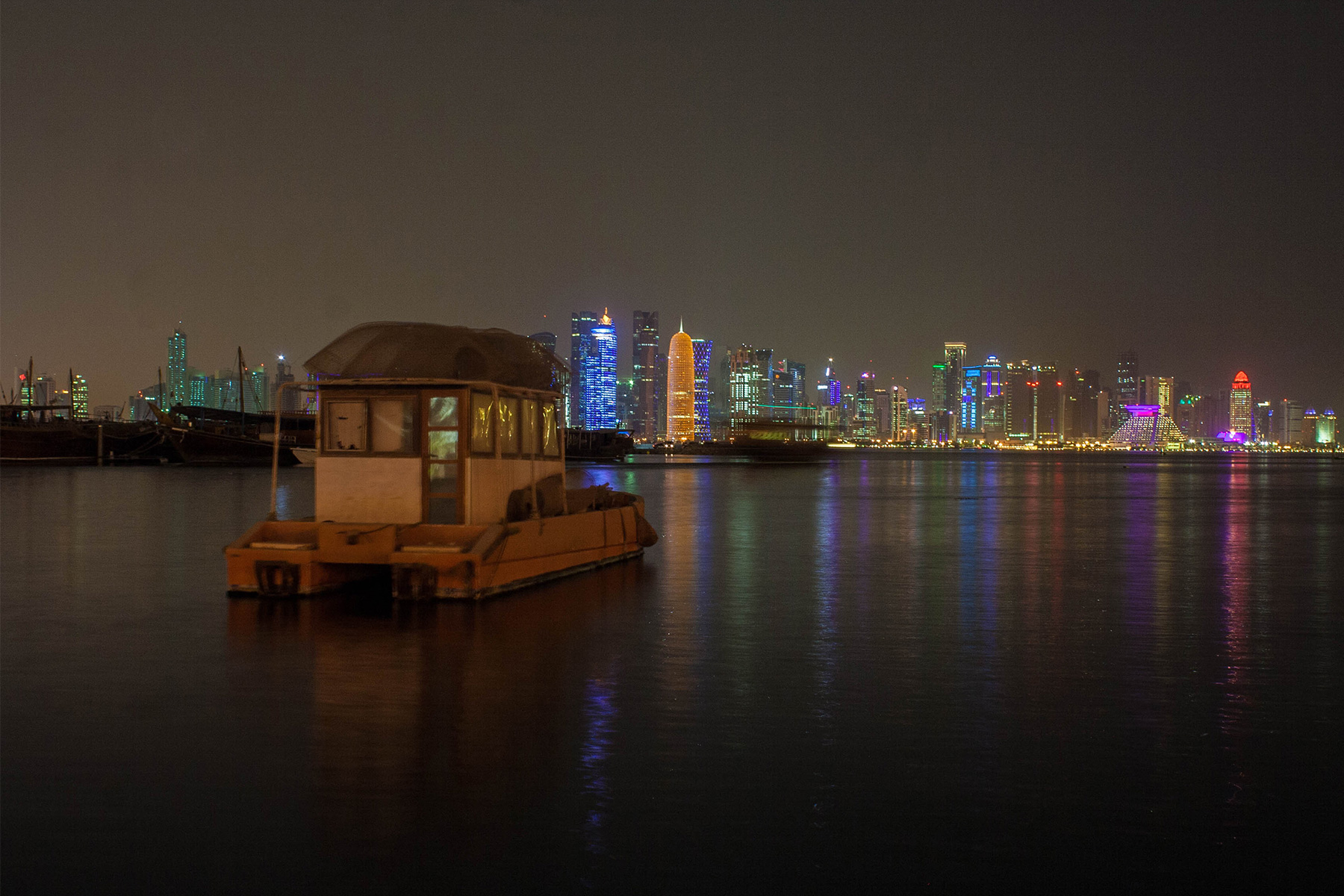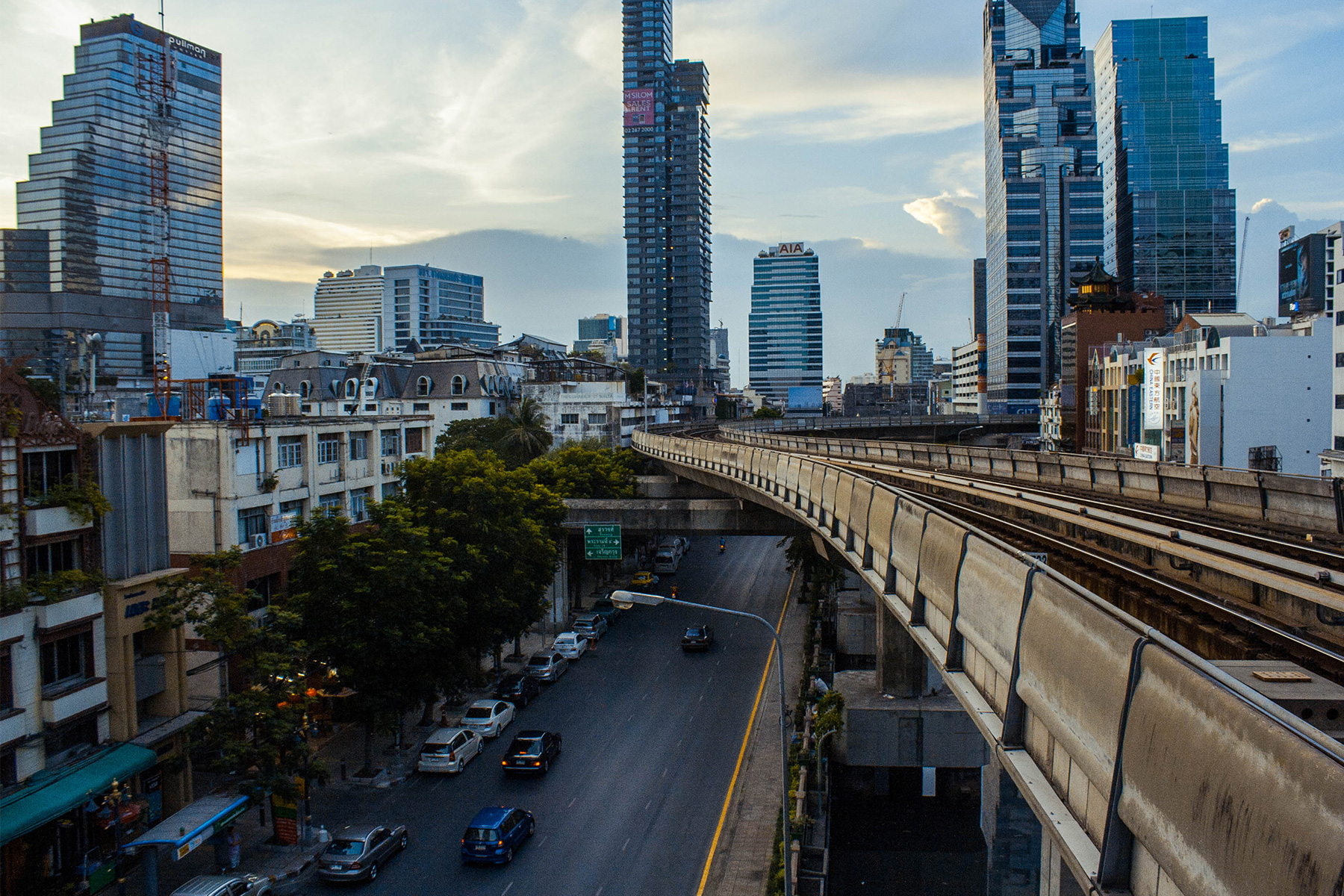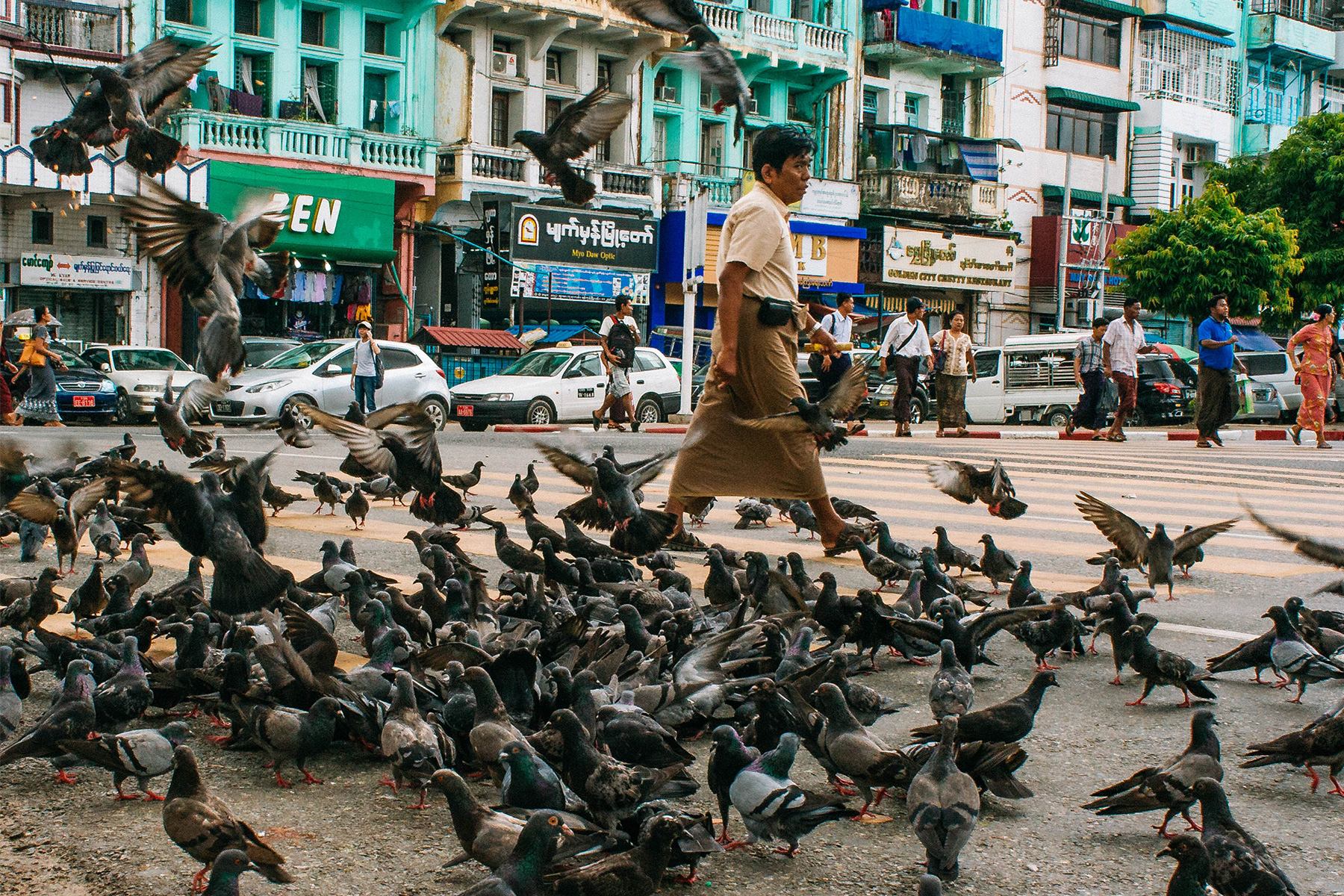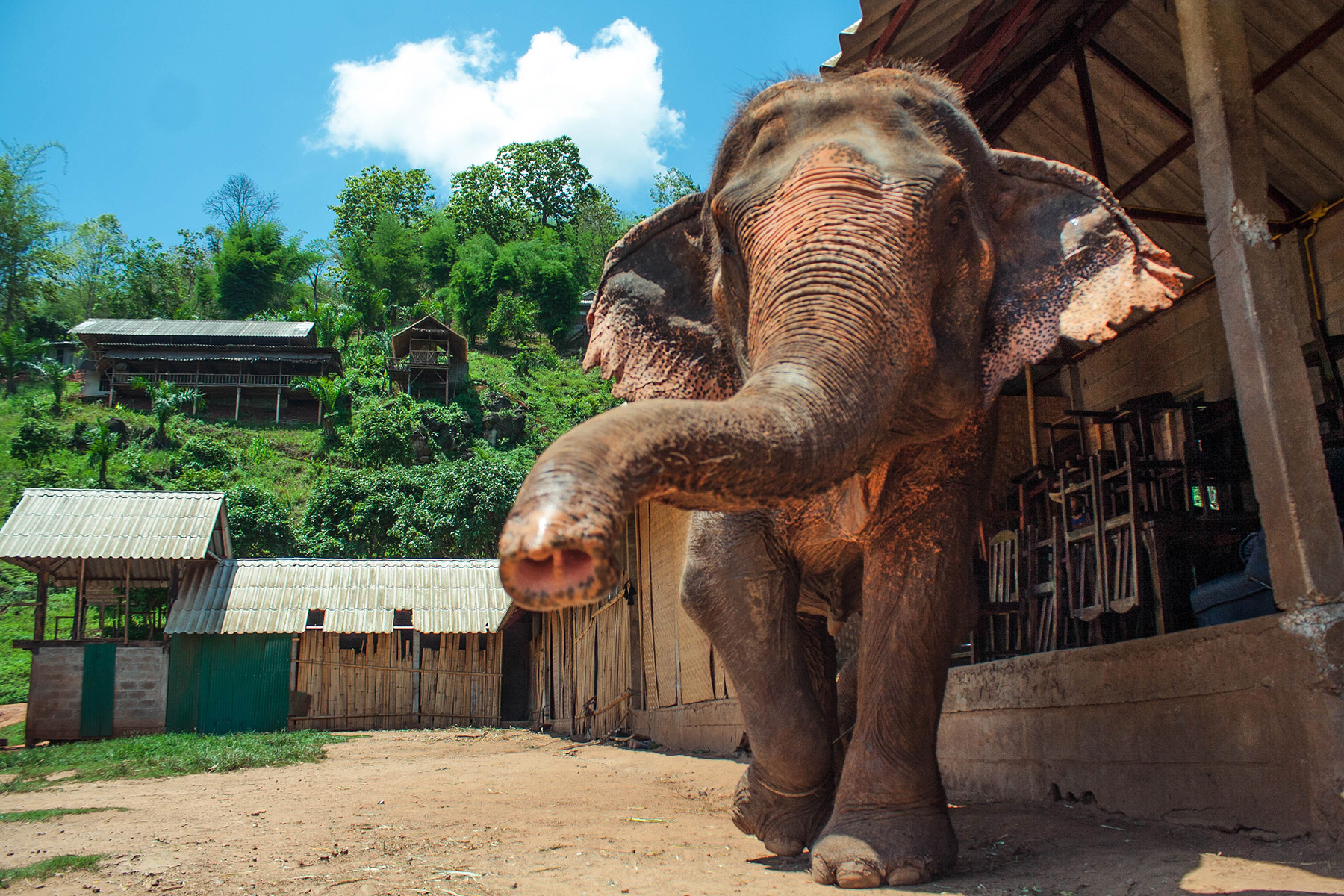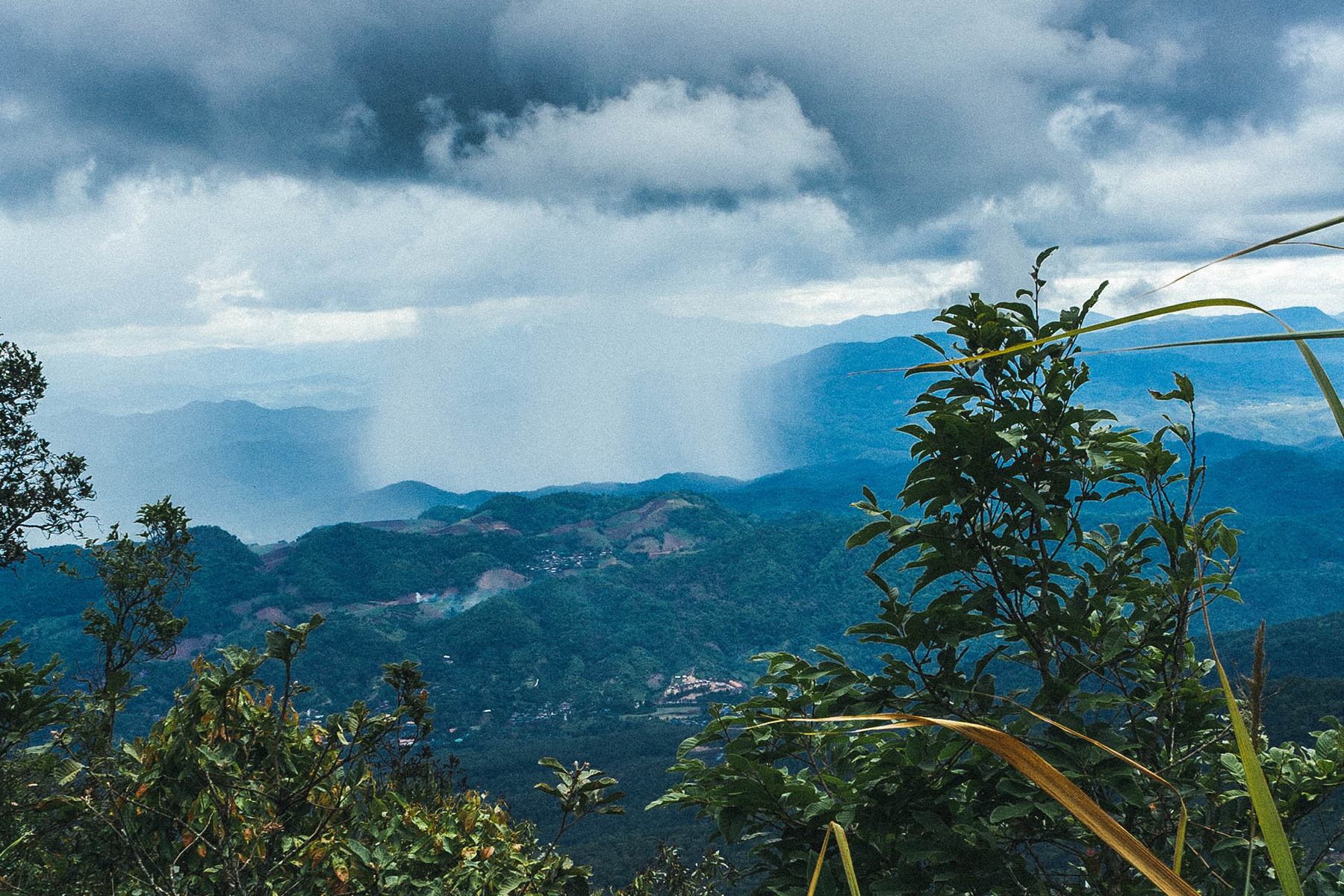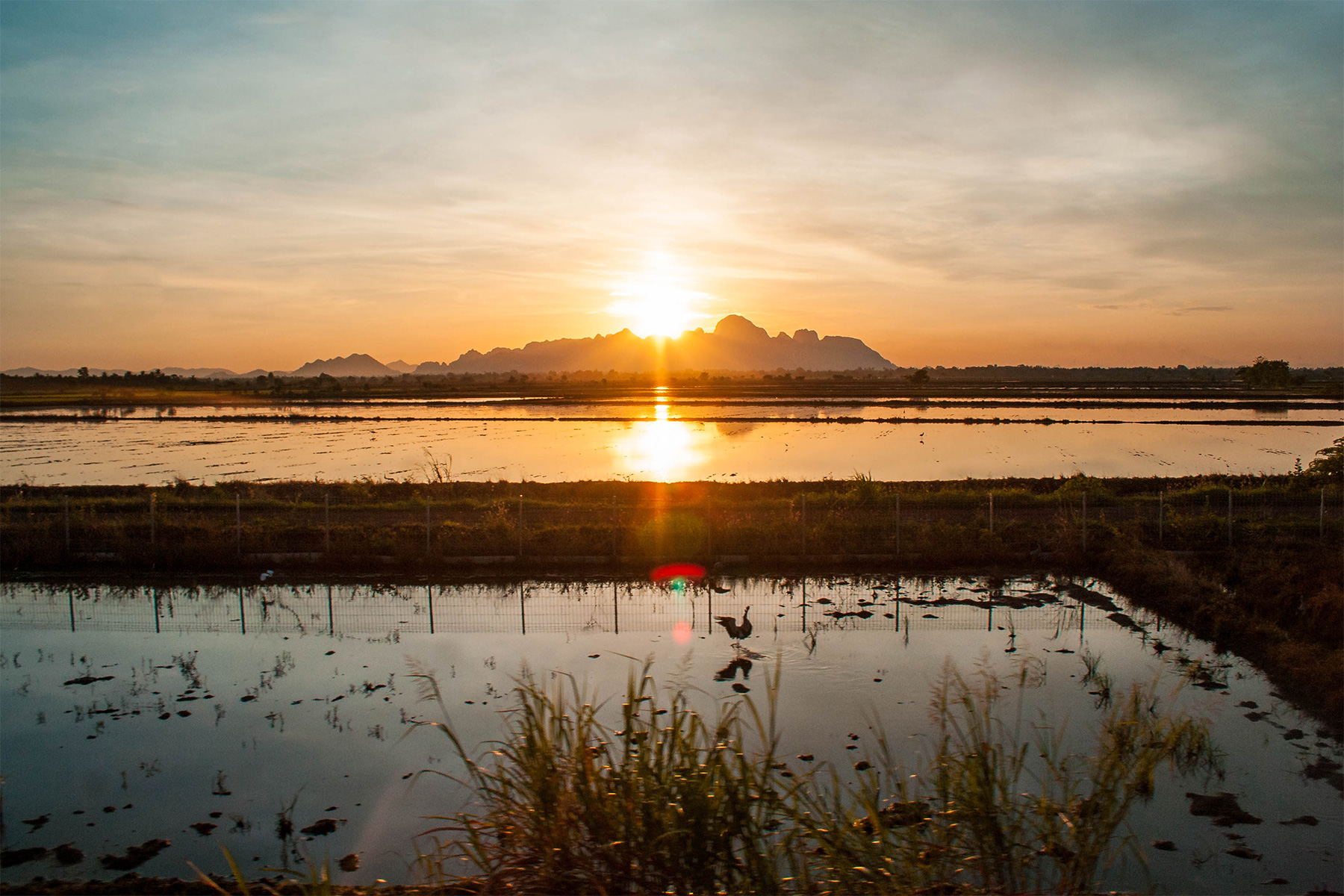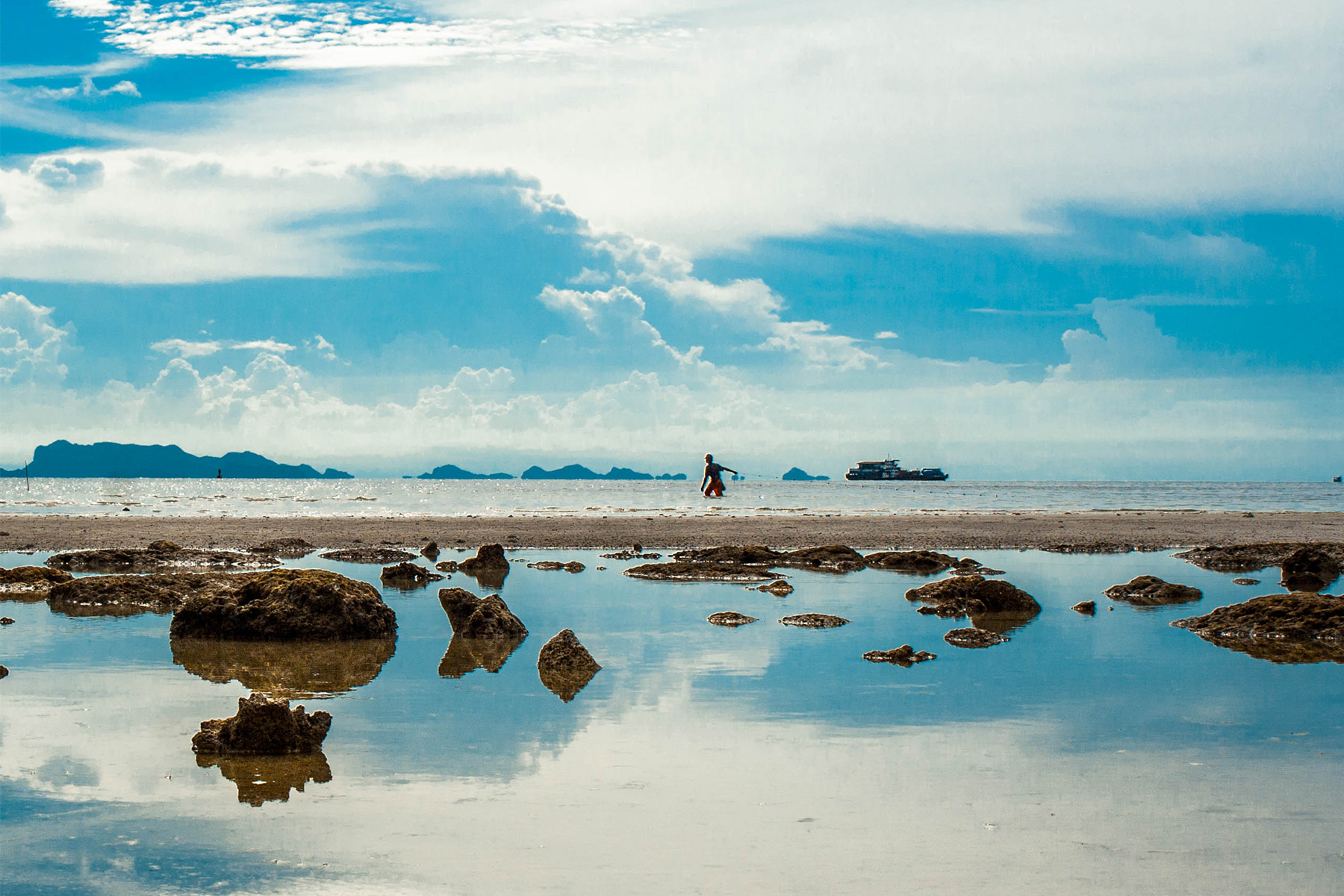Planes, trains and tuk-tuks; how traveling gives us insight into how other cultures get around.
text and photos by Grace Molteni
Last month I cashed in my PTO to spend two weeks traveling abroad with my friend Wil; it started as a “joke” about tagging along with him, but when we arrived, cameras strapped to our hands, it soon became a 14-day photo hunt. We spent our R&R running around new cities, seeing what there was to see, having a beer or a sip of coffee, and then seeing what we didn’t know there was to see. Each night, we dragged ourselves into bed feeling completely full on the day.
We started in Bangkok and then flew over to Yangon (Myanmar), then hopped back on a plane to Chiang Mai in the northern province of Thailand. From there, we took an overnight train down to Bangkok for a night before capping off our trip on the southern island of Koh Samui. My semester in Italy during college and current carless lifestyle in Chicago make me partial to public transportation. I’m a big advocate for trying any and all means of getting around. In total, my friend and I took: eight planes, four Skytrains, two subways, two boats, two scooters, one ferry, one covered pick-up, one tuk-tuk (three-wheeled motorized cab, similar to a rickshaw but with an engine), plus countless taxis. Oh yeah, and one adolescent Asian elephant named Superman.
I think there are some places we travelers love because of how contained they are, cities like Zurich, Copenhagen, and Stockholm; we are drawn to these cities simply for their order. But this is not why we love Bangkok. We love Bangkok for the way it bubbles up and spills onto itself. Wil described it later as a “refresher course for every sense…like never even knowing what they [your senses] were meant to do.” Admittedly, it’s hard not to run around Bangkok with wide-eyed curiosity exclaiming, “What’s this? What’s this?!” in Jack Skellington fashion.
Because Bangkok is more ancient than the United States (Thailand was founded in 1238), it is easy to forget that the rivers and canals used to be the main form of transportation. The city expanded from a village to a capital in the late 19th century, and later became a full-fledged metropolis starting in the 1960s. Rapid expansion continued later due to the economic boom (triggered by improved foreign trade and a steadily growing private sector) in the late 1980s to early 1990s. And with that boom came Western influence. Bangkok was retrofitted to accommodate cars and, later, both a Skytrain (elevated) and subway system. Cars, trains, scooters, motorcycles, bikes, streetcars, wild dogs, tuk-tuks, and people all funnel through the city in a dangerous dance. As a result there is no dominant way to get around.
Yangon, which is north of Bangkok in Myanmar (formerly known as Burma), is a different story. While the traffic itself is comparable to what we saw in Bangkok, there aren’t scooters or tuk-tuks on the roadways. Since the recent lifting of sanctions and isolating international embargoes, everything in Yangon, including the city’s infrastructure, is in an ongoing state of development. But despite these booms, it is still a third world country, listed as the 23rd poorest country in the world between 2009 and 2013, with Low Human Development rankings for standards of living, life expectancy, years of schooling, and gross national income per capita, among other factors.
Construction and destruction are simultaneous, but the city is surprisingly walkable (although it’s a miracle neither of us fell into an open sewer). For all of the construction happening we didn’t see much in the way of blocked off building zones – it’s as if the city is being torn down and remade on top of itself. Roads seem to be built quite literally as cars use them and are packed with traffic and people all day.
Back in Thailand, rail travel is more for novelty’s sake than anything; our cross-country overnight train ride was clunky and quite slow. While trains are quite economical, given how long it takes to get from one end of the country to the other (at least 12 hours), when you’re tight for time it’s not the most efficient mode of travel. But if time isn’t the most important factor, the open-window policy lends itself to some incredible scenery (if you can stand not having Wifi to Snapchat the ride). While located on opposite ends of the country, Chiang Mai and Koh Samui both met us with heart-stoppingly beautiful vistas – lush mountains, waterfalls, the seemingly endless Gulf of Thailand, and of course, tourists.
Amid all the fuss of tourists, Wil and I rented motorbikes and got the hell out, first to the Doi Suthep mountaintop. Surprisingly, neither insurance nor international licenses are required or checked to rent a scooter (although the police will still stop and fine you if they get the chance, as we unfortunately found out). There seems to be a level of social trust on the roads that doesn’t exist here in the U.S. Call it trust or call it carelessness, but I’ve never seen chaos work so well.
It often seems to me that in the U.S. there is a tendency to rely on our own cars, or apps like Uber and Lyft for pick-up services, and we want to know who is driving us where, while in Southeast Asia locals and expats alike jump on to the back of motorbike taxis and wave down covered pick-up trucks for a bench seat in the back without apprehension. In countries like Thailand and Myanmar, communal rides and public transportation – ideas that many Americans only seem to remember in times of economic hardship – are an integral part of everyday life.
Photographer’s note: I started a personal project on Instagram cataloging my travels by pairing music with places I visited (#spacesandsongs). The following images are tagged in the same way.
NOTE: Please click on captions to advance to the next photo.
[slider navigation_style=”both” custom_slider_transition=”
[slide]
1. Doha, Qatar, 9 PM
London Grammar – Nightcall
This is our view from the Corniche waterfront of downtown Doha during our layover from Chicago to Bangkok. The roadway behind us is teeming with cars but the bay is calm; we catch a few more cityscape shots in the 100 degree desert heat, and head to the Souq (marketplace) to see about some dinner (chicken shawarma, lamb kofta kebabs, yogurt and cucumbers, and plenty of naan for dipping.)
[/slide] [slide]
2. Bangkok, Thailand, 11 PM
Jamie xx -Loud Places
This is our first look at the Skytrain that snakes its way through Bangkok as we head into the heart of the city.
[/slide] [slide]
3. Bangkok, Thailand, 9 AM
Parade of Lights – Golden
Chasing harsh light on a walk to a nearby park, we stop on one of Bangkok’s many concrete pedestrian overpasses to watch traffic buzzing on the crowded streets below.
[/slide] [slide]
4. Yangon, Myanmar (Burma), 10 AM
Jagwar Ma – Uncertainty
Walking around Yangon as a pair of young, tattooed (Wil), green-haired (me) white people is like being an exotic animal escaped from the zoo. To say we get a lot of curious looks is an understatement. Wil’s penchant for scaring up flocks of pigeons likely doesn’t help our case.
[/slide] [slide]
5. Ran-Tong Elephant Rescue, Ban Chang, Thailand, 10 AM
Major Lazer – Lean On (ft. DJ Snake & MØ)
Superman is an 11-year-old Asian elephant, who, like his trainer (aka “mahout”) Noklae, came here three years ago from Burma to escape rebel fighters and civil wars. Noklae tells us he followed Superman across the border to the rescue farm, leaving behind his home and his family. He has been training him ever since.
[/slide] [slide]
6. Doi Suthep, Chiang Mai, Thailand, 8 PM
Incubus – Black Heart Inertia
We bite the bullet and brave traffic on our motorbikes long enough to get out of the city. We head for higher ground on a nearby Doi Suthep mountaintop to escape the heat, and we are rewarded with this view of a passing thunderstorm.
[/slide] [slide]
7. Somewhere between Lamphun and Lopburi, 6 PM
Clean Bandit – Rather Be
First-class cars (read: A/C) were all booked, but second-class have fans and an incredibly lax open window policy. We spend most of the evening bouncing back and forth between seats, chasing light and catching shots, until the sun goes down.
[/slide] [slide]
8. Somewhere between Lamphun and Lopburi, 6 AM
Elliot Moss – Best Light
The heat starts early here in Thailand and pulls me from sleep, just in time to catch the sun peeking up over a mountain range in the distance from the open window of our train.
[/slide] [slide]
9. Na Thon Beach, Koh Samui, Thailand, 3 PM
Young The Giant – Waves
Looking out onto the shore, sipping on spirits, and sharing silence with one my favorite people, I watch the steady flow of fisherman pull their nets in and ships roll back out to sea.
[/slide] [/slider]
[hr style=”striped”]
Grace Molteni is a Midwest born and raised designer, illustrator, and self-proclaimed bibliophile, currently calling Chicago home. She believes strongly in a “beer first, always, and only” rule, and is forever seeking the perfect dumpling. For more musings, work, or just to say hey check her out on Instagram or at her personal website.

